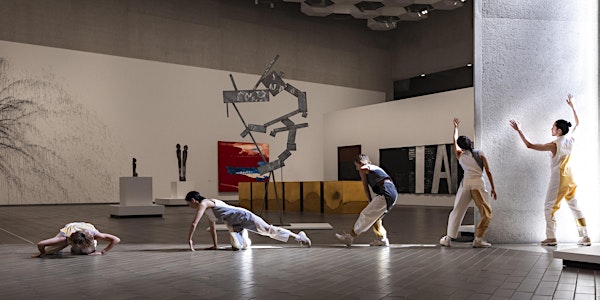—
About the sector resource:
SECTOR RESOURCE FOR CHOREOGRAPHIC WORKS IN THE MUSEUM is a freely available, online resource focused on choreographic work in the context of the museum and addresses how we can better serve and represent the artist in this context. Drawn directly from our research into the field of practice through interviews, consultations and practical case studies, all information is designed specifically to improve conditions for artists working in this field and to assist museums and arts workers with this task. Equally, it is intended as a reference for artists working with museums to provide knowledge and to support their agency and autonomy in such situations.
This resource provides a foundation from which to build stronger relationships and working practices that support the successful development, production presentation and preservation of choreographic works in the museum. While not intended to be prescriptive or exhaustive, the intention is to support performing artists' safe and sustainable work within the museum context. Each choreographic practice or work is unique, requiring a tailored approach to ensure all the individuals involved in its creation and presentation are respected, supported, fairly compensated, and safe.
The Sector Resource has been developed across the entirety of the research project, with numerous individuals contributing to the shape and development of the content. The research team would like to acknowledge and extend our gratitude to each contributor, who are all acknowledged by name on the website.
We would also like to extend thanks to Nathan Cutts and Studio OK-OK for their invaluable collaboration, transforming the resource into a clearly articulated and beautifully designed website. We are pleased to announce that the National Association for the Visual Arts (NAVA) will support the resource as the ongoing caretaker. The Institutional support and guidance from NAVA has been fundamental to the development of the Sector Resource. In its role as caretaker, NAVA sustains the continuous publication of this resource by financing its web hosting.
About the publication:
Precarious Movements: Choreography and the Museum is a publication that surveys the choreographic turn within the visual arts. Edited by Erin Brannigan (UNSW), Pip Wallis (MUMA), Hannah Mathews (PICA) and Louise Lawson (TATE) with Amita Kirpalani (NGV), the publication features more than twenty expert contributions from performers, scholars, critics, choreographers and arts professionals working across archives, conservation, curation and production. The publication scopes the work of the work, the artists and institutions, and the legacy and trace of choreography in the museum today.
Authors include:
Daina Ashbee, Julia Asperska, Caitrín Barrett-Donlon Lara Barzon, Erin Brannigan, Lisa Catt, Natasha Conland, Tamara Cubas, Alicia Frankovich, Brian Fuata, Tammi Gissell, Angela Goh, Rochelle Haley, Maria Hassabi, Amrita Hepi, Alice Heyward, Victoria Hunt, Juanita Kelly-Mundine, Louise Lawson, MaryJo Lelyveld, Adam Linder, Hannah Mathews, Carolyn Murphy, Louise O’Kelly, Cori Olinghouse, Pavel Pyś, Melissa Ratliff, Ana Ribeiro, Latai Taumoepeau, Zoe Theodore, Pip Wallis, Ivey Wawn, Catherine Wood, and Sara Wookey.
